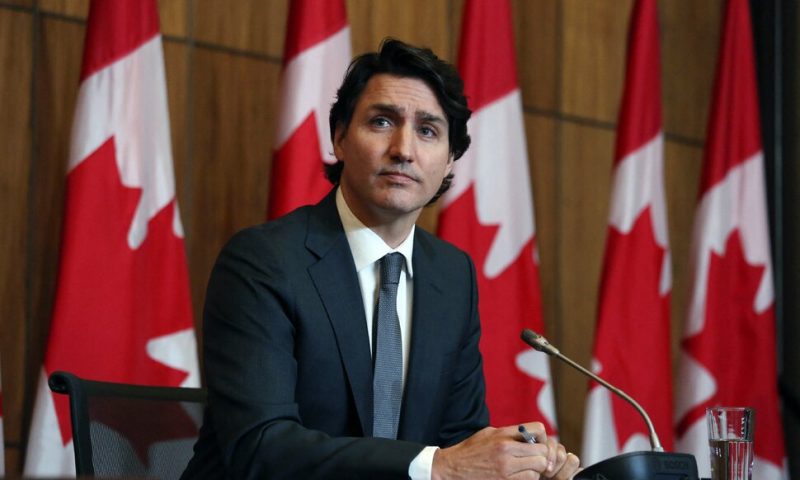A vital U.S.-Canada border crossing began to return to normal Monday, but protests persist in Ottawa and beyond.
Prime Minister Justin Trudeau invoked emergency authorities Monday to end demonstrations that have paralyzed Canada’s capital and beyond since late last month, but he assured Canadians that he would not call in the military.
“This is about keeping Canadians safe, protecting people’s jobs and restoring confidence in our institutions.” Trudeau said during a news conference Monday. “We’re not suspending fundamental rights or overriding the Charter of Rights and Freedoms. We are not limiting people’s freedom of speech. We are not limiting freedom of peaceful assembly. We are not preventing people from exercising their right to protest legally. We are reinforcing the principles, values and institutions that keep all Canadians free.”
The move comes even as traffic began to creep back to normal Monday at one of the continent’s busiest border crossings after almost a week of protests that rendered the vital supply route nearly impassable but as an occupation continues in Ottawa.
The “Emergencies Act” has rarely been used and would give the federal government extra powers to restore order by ending the demonstrations.
Since late last month, America’s northern neighbor has seen a surge in demonstrations, as Canadians outraged with a recently imposed coronavirus vaccine mandate for truckers crossing the U.S.-Canada border has led to protests by the self described “Freedom Convoy” throughout the country – including the blockade of the Ambassador Bridge, a vital supply route for automakers in Detroit.
Canadian police began clearing the bridge over the weekend after a Canadian judge granted an injunction Friday, enabling law enforcement to end the blockade. Windsor Police Sgt. Steve Betteridge told reporters that around 12 people were arrested and charged Sunday. The arrested individuals are all facing charges of mischief, according to a statement from the police department, while multiple vehicles were seized from the demonstration area.
The Canada Border Services Agency announced late Sunday that “normal border processing” had resumed.
“Today, our national economic crisis at the Ambassador Bridge came to an end,” Windsor Mayor Drew Dilkens said Sunday.
The blockade forced automakers on both sides of the border to scale back production or shut down altogether, spurring U.S. officials last week to urge the Canadian government to use its federal powers to ease economic disruptions.
But even as the bridge was cleared, demonstrations in other parts of Canada – and the world – did not ease.
In France, a convoy likewise protesting COVID-19 restrictions drove into Paris Saturday, defying a police order, while in the Netherlands vehicles blocked an entrance to the Dutch parliamentary complex. In New Zealand’s capital city of Wellington, demonstrations persisted over the weekend – a phenomenon that Prime Minister Jacinda Ardern called “imported.”
Back in Canada’s capital, demonstrators entered their third week of occupation of the area surrounding parliament, even after Doug Ford, the premier of Ontario, declared a state of emergency across the province and said that anyone involved in the continued protests would face “severe” consequences including fines or jail time.
But on Monday, Ford announced that some of the province’s pandemic restrictions would ease, removing its vaccine passport system beginning March 1, while keeping the mask mandate in place.
“Let me be very clear: We’re moving in this direction because it’s safe to do so,” Ford said. “Today’s announcement is not because of what’s happening in Ottawa or Windsor, but despite it. On Friday morning I made the difficult decision to declare a state of emergency in Ontario. The police now have every single tool they need – they have every resource available to them.”

